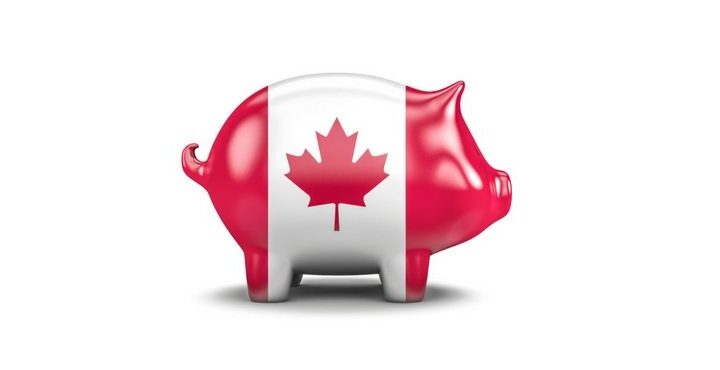Common Depreciable Property Classes
TurboTax Canada
June 16, 2023 | 4 Min Read
Updated for tax year 2024

When you purchase certain items for your business, the Canada Revenue Agency (CRA) will not allow you to deduct the entire value of the item for the year of purchase. Instead, the CRA allows you to write off a portion of the item’s depreciable value over a period of several years by claiming Capital Cost Allowance (CCA). However, there is no set formula to determine this value. Instead, the CRA groups assets into different classes depending on a variety of factors.
Below are some of the most common classes for depreciable property:
Classes 1, 3 and 6 – Buildings
Class 8
Any property you have acquired that does not fall into another class will typically fall into Class 8. The class often includes furniture, appliances, some fixtures, machinery, and other equipment. Class 8 also includes electronic communications equipment, data network infrastructure equipment and systems software for that equipment. Class 8 has a CCA rate of 20%.
Class 10
Class 10 has a CCA rate of 30%. Prior to 2005 and the addition of more CCA classes, class 10 included general-purpose electronic data processing equipment (computers and computer system software) unless equipment in this class was purchased before March 23, 2004 or you filed a special election you will find these assets now belong in class 50 (55%).
This class is used for motor vehicles and some passenger vehicles unless the passenger vehicle meets class 10.1 conditions. Passenger vehicles acquired after December 31, 2021 that cost less than $34,000 before tax, vehicles costing more than $34,000 are considered to be Class 10.1 assets and are listed separately.
Vehicles in Class 10.1 also have a rate of 30%. However, some restrictions exist in this category for motor vehicles. Before categorizing a motor vehicle as a class 10 asset, you should review the subsections of the CRA’s description of this class.
Zero-Emission Vehicles (ZEV) have separate classes entirely (class 54), and owners of these vehicles should see this TurboTax article for more information: Zero-Emission Vehicles
Class 12
While items in Class 12 are technically classed as depreciable assets, Class 12 has a CCA rate of 100%. This means that you are able to claim these expenses as if they are current expenses.
When filing your taxes, you can include the cost of china, cutlery, linen, and uniforms in this class. The cutting or shaping of parts of machines, as well as dies, jigs and moulds also fall into this category. Software that is not systems software also falls into this class.
For example, if you spend $100 buying a program for your computer, you may claim the entire amount since this category has a CCA rate of 100%.
In contrast, if you spend $100 on an operating system for your computer, this expense will be considered systems software. Since systems software falls into class 10, you may only deduct 30% of the purchase cost.
However, if you acquired tools, kitchen utensils, medical or dental instruments on or after May 2, 2006, the CRA will apply a $500 cap to your allowable claim. Instead of receiving the generous CCA rate of class 12, your expense falls into class 8. You can claim 30% of class 8 costs as expenses for the year of purchase.
Class 50
Included in Class 50 property acquired after March 18, 2007, that is general-purpose electronic data processing equipment and systems software for that equipment, including ancillary data processing equipment. This means computers, electronic office equipment and systems software for that equipment falls into Class 50 with a CCA rate of 55% if it was purchased after that date.
If you purchased equipment that falls into this category prior to this date, check out this TurboTax FAQ for the CCA classes: What CCA classes should be used for computer and electronic office equipment, networking equipment, and software?
More Capital Cost Allowance (CCA) information from CRA can be found in these links:
- Canada Revenue Agency: Claiming capital cost allowance (CCA)
- Canada Revenue Agency: Basic information about capital cost allowance (CCA)
- Canada Revenue Agency: Classes of depreciable property
Your taxes are done right, anyway you choose.
File on your own, with live help, or hand your taxes off to an expert. You can be confident that your taxes are done right with TurboTax.
Get StartedRelated articles

© 1997-2024 Intuit, Inc. All rights reserved. Intuit, QuickBooks, QB, TurboTax, Profile, and Mint are registered trademarks of Intuit Inc. Terms and conditions, features, support, pricing, and service options subject to change without notice.
Copyright © Intuit Canada ULC, 2024. All rights reserved.
The views expressed on this site are intended to provide generalized financial information designed to educate a broad segment of the public; it does not give personalized tax, investment, legal, or other business and professional advice. Before taking any action, you should always seek the assistance of a professional who knows your particular situation for advice on taxes, your investments, the law, or any other business and professional matters that affect you and/or your business.









